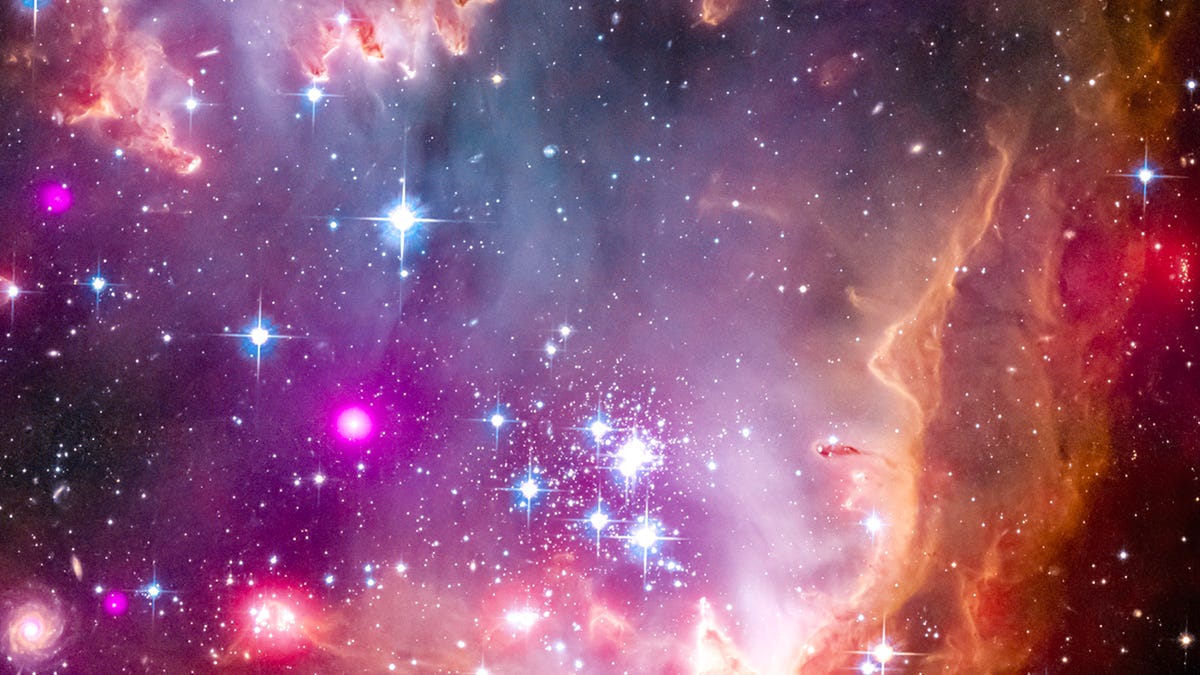Feast your eyes on the Small Magellanic Cloud
For the first time, astronomers detect the presence of X-rays being emitted from young stars outside of the Milky Way.

This galactic region takes its name from Ferdinand Magellan, a 16th century explorer who reportedly referred to the cloud's placement in the sky to guide his ship on his worldwide journeys.
In this spectacular composite image released today by NASA's Marshall Space Flight Center, in Huntsville, Ala., scientists are reporting what they say is the presence of X-rays being emitted from young stars -- or "suns" -- outside the Milky Way. This is the first such detection for astronomers as they track the life cycle of stars. Reporting on the discovery, the co-authors of a new paper detailing their findings describe the so-called eastern "wing" of the Small Magellanic Cloud as "an excellent laboratory" for research into star formation. The region's low content of gas, dust, and stars make it ideal for studying.
The most active area of star formation in the region is known as NGC 602, near the tip of the Wing; one of the clusters, NGC 602a, is reported to be about as old and equal in mass and size to the Orion Nebula Cluster, which is of keen interest to scientists as it is one of the closest star-forming regions to Earth.

